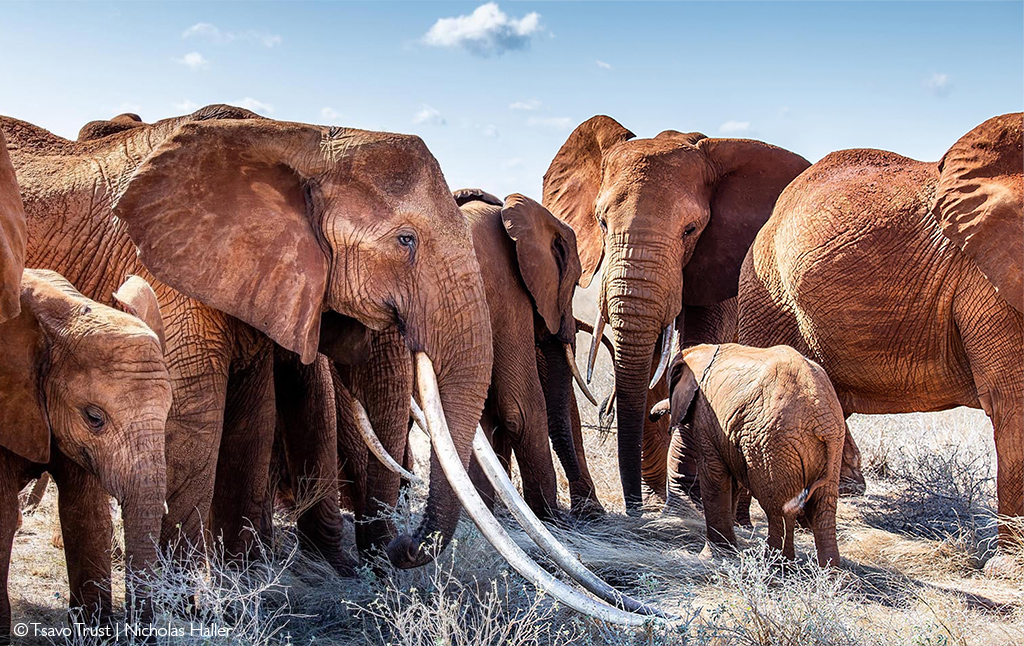
Another big tusker has fallen – this time, the matriarch of Tsavo East. Dida, one of the largest female tuskers recorded in Africa, has died of natural causes in Tsavo National Park, as announced by the Tsavo Trust and Kenya Wildlife Services (KWS) this week.
“Dida, the area’s best-loved matriarch and the greatest repository of many decades worth of knowledge, has sadly passed,” announced Tsavo Trust in its statement.
Dida, 60-65 years old at the time of her death, was well known for her tusks that stretched right to the ground – a noteworthy occurrence in a female elephant.
“Dida died naturally of old age; in fact, she surprised us all,” continued Tsavo Trust’s eulogy. “She lived longer than many of us thought she would. To us, allowing an elephant to live its full life is something we are very proud of.”
KWS shared an image on Facebook of Dida’s decomposed remains as discovered by the team. KWS added that “those who got to know her through pictures and videos, as well as those who had the exquisite pleasure of meeting her in person, will remember her”.

In its statement on the passing of the Tsavo queen, Tsavo Trust said that Dida was the true embodiment of an iconic cow. “Over the course of her long life, she shepherded her herd through many difficult times. She was the inspiration for documentarians and the pull for tourists.”
Dida’s death follows in the wake of the death of Amboseli National Park super tusker Tolstoy, who died in April following complications from a spear wound. In 2020, famous tusker Big Tim died in Amboseli from natural causes at the age of 50.
While Africa’s last remaining tuskers are under threat, they are given their best chance for survival in protected areas such as Tsavo, where elephants are closely monitored for protection against poaching and injury. Kenya does not permit trophy hunting, unlike countries such as Botswana and Zimbabwe, where Africa’s last giant tuskers are targeted as prized trophies (follow the links for two examples). The Tsavo Trust’s Big Tusker Project and KWS provide aerial and ground support to collect data and respond to imminent threats to the living legends. This ongoing presence is a significant deterrent to poachers and other illegal activity.
Today, nine giant bull tuskers remain in Tsavo. There are also 27 emerging tuskers and three remaining iconic cow tuskers on the Tsavo Trust and KWS Tusker database.
To comment on this story: Login (or sign up) to our app here - it's a troll-free safe place 🙂.![]()








